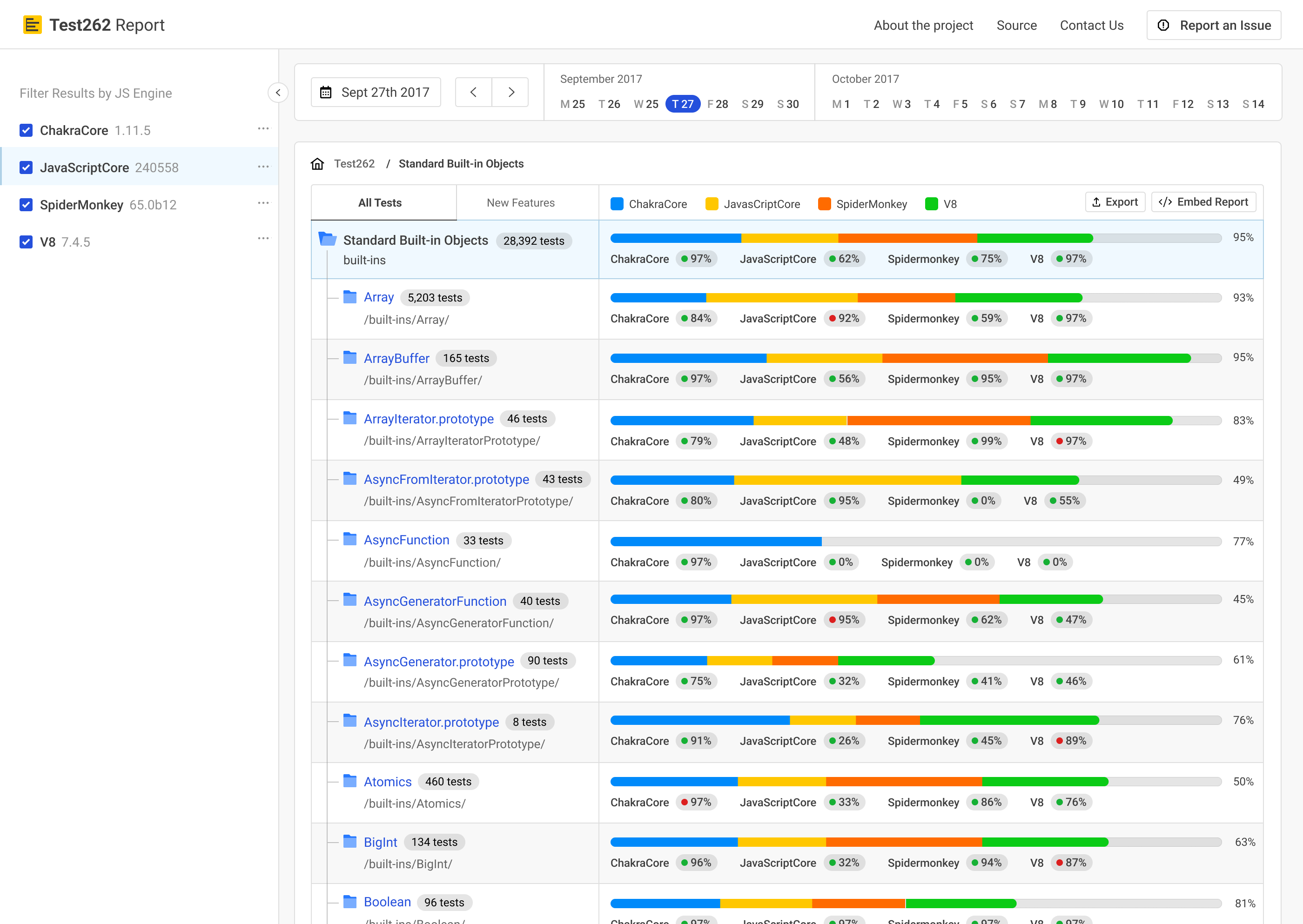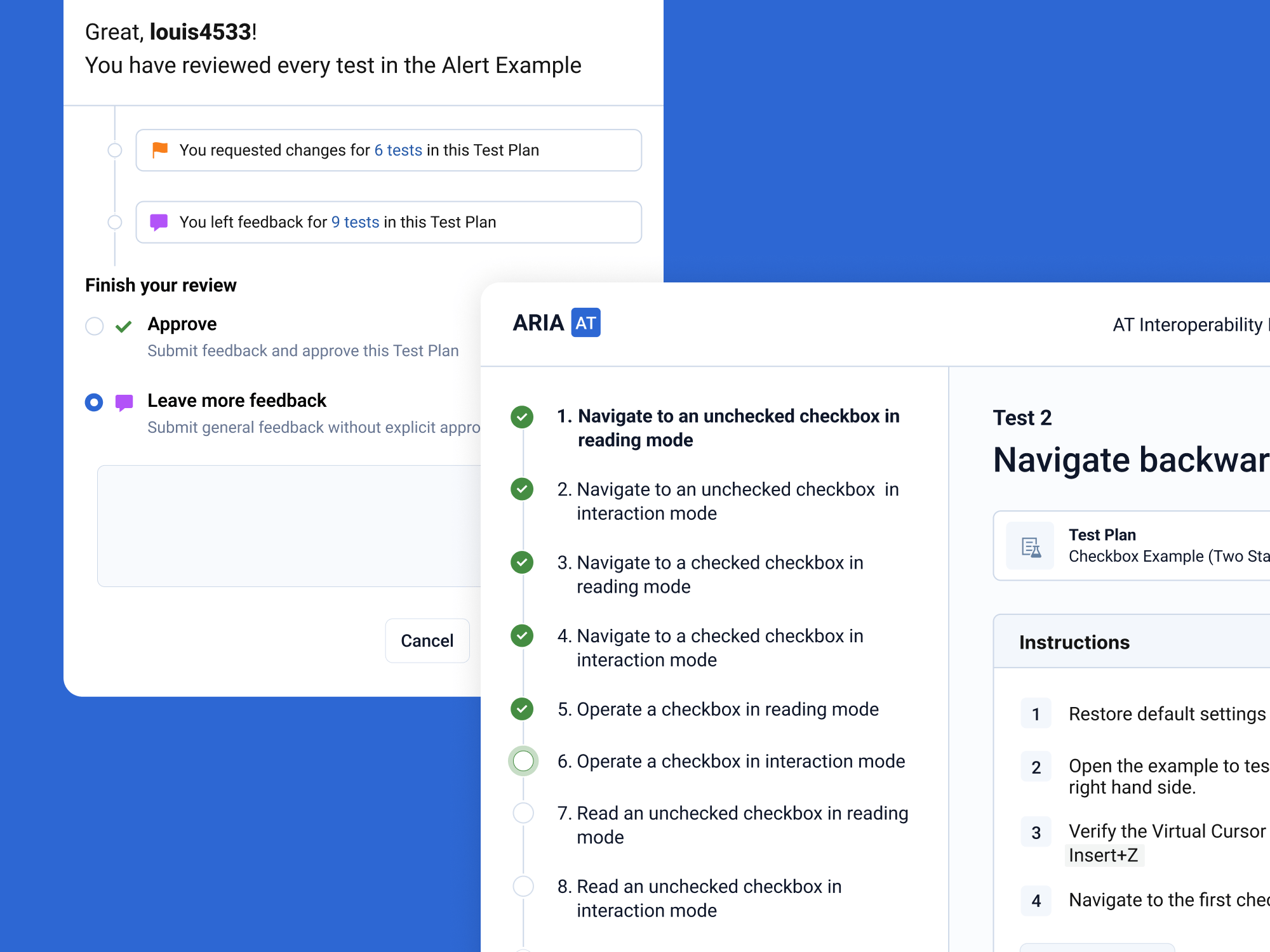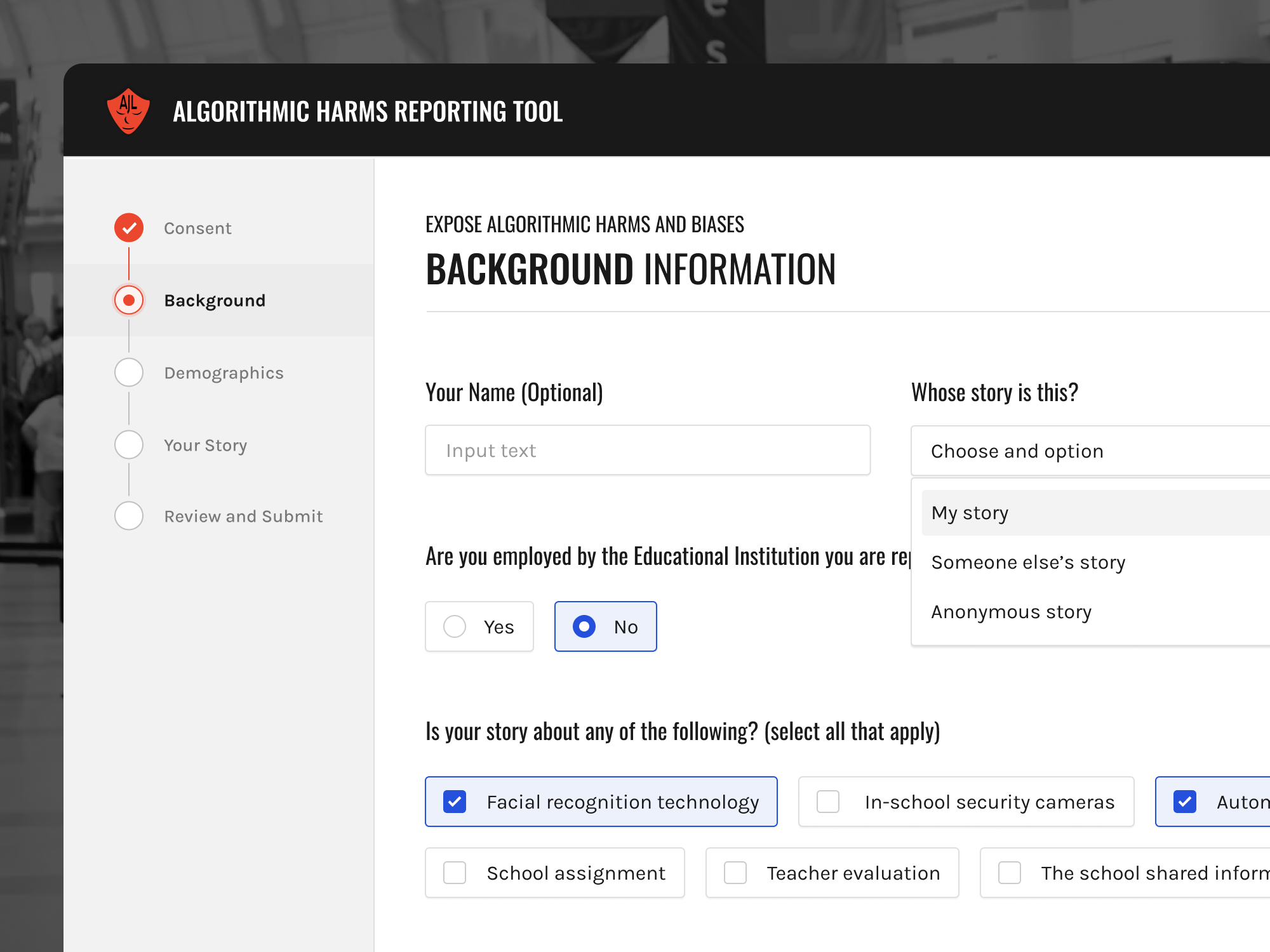
Test262 Report
The main source of truth for the state of Javascript features.

The Challenge
Lack of Reliable Reporting on JavaScript Conformance and Compatibility
JavaScript developers had no centralized, reliable resource for tracking feature support across engines, leading to inconsistent implementations and unpredictable functionality. Though Test262 existed as a conformance suite, there was no developer-friendly, accessible tool reporting its results across engines in real-time.
The Solution
An Accessible, Multi-Browser View for JavaScript Compliance
We created a reporting tool that runs Test262 on nightly engine builds, displaying feature compatibility across JavaScript engines. To ensure usability, I conducted rounds of interviews and usability testing, refining the report’s UI to match the expectations and workflows of JavaScript developers. As a result, Test262 Report delivers accurate, accessible conformance data that can be easily referenced by both developers and standards authors.

Embedding Reports
One significant feature of Test262 Report is the ability for users to embed a specific report on their site or documentation. Recognizing the utility of embedding for developer documentation and education, we built a simple interface that generates embed code tailored to user-selected reports. This feature expands Test262’s impact, allowing real-time conformance data to be integrated into developer resources and shared directly with JavaScript communities.

Date Selection for Reports
Another key feature we developed is the date-picker tool, which allows users to view historical data on JavaScript conformance. By selecting any date, developers can compare engine progress over time, observing how and when engines have reached conformance on specific features. This historical perspective supports development decisions, helping users plan for compatibility and validate assumptions about feature support.

Customizable Progress Bars
The Test262 Report also allows users to customize the color scheme of progress bars that represent each engine’s conformance status. By providing a color picker, we enabled users to adapt the visual indicators to their accessibility needs or align them with their documentation styling. This customization ensures that the report can be seamlessly integrated into various platforms, enhancing both aesthetic flexibility and visual accessibility for all users.

Approach
Given that the Test262 Report aimed to provide a comprehensive view of JavaScript conformance, it was essential to establish a deep understanding of user needs and project goals. I prioritized collaboration, fostering open communication with stakeholders and team members to ensure a shared vision throughout the design process.
Understanding User Needs
We began our research by conducting stakeholder interviews to clarify the project’s objectives. Engaging with JavaScript developers early on helped us pinpoint their needs and preferences, leading us to focus on the interoperability tables featured on test262.report. We also identified potential use cases for automation tools, implementers, specification authors, and documentation maintainers.
Sketching and Prototyping
With insights gathered from interviews, we sketched initial ideas and developed a prototype using Balsamiq. This rough prototype allowed us to start usability testing, validating our major assumptions and gathering feedback.
Iterative Design Process
After refining our ideas through user feedback, we created high-fidelity mockups and a second prototype in InVision. We conducted another round of usability studies to iterate on the design further, ensuring that we addressed user needs before moving into implementation.
Impact
The Test262 Report has become a vital resource for the JavaScript community, providing transparent and reliable information about the status of JavaScript conformance across major browsers. By prioritizing user feedback and engaging in an iterative design process, we created a platform that not only meets the needs of JavaScript developers but also empowers other stakeholders like implementers and specification authors.
Since its launch, the report has fostered a deeper understanding of JavaScript feature compatibility, enabling developers to make informed decisions when implementing new features. The accessibility of the report ensures that it is usable for a diverse audience, further reinforcing the importance of inclusive design in technical documentation.
Reflecting on this project, I’ve gained invaluable insights into the complexities of web standards and the critical role that collaboration and user-centric design play in successful outcomes. I am excited to see how the Test262 Report evolves in the future and the positive impact it will continue to have on the JavaScript ecosystem.

